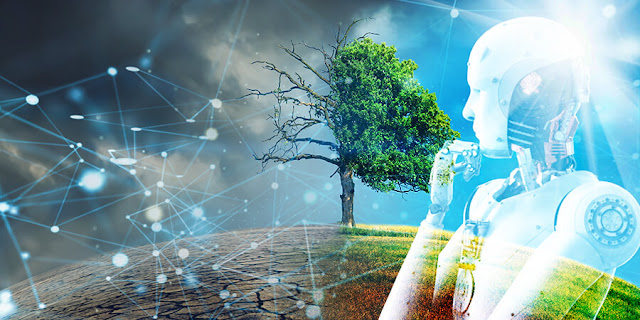By Kenton Patterson, Future Tech Wise Blog
The weather affects us all, in ways big and small. It can dictate how we dress in the morning, provide us with green energy, and, in the worst cases, create storms that devastate communities. In a world of increasingly extreme weather, fast and accurate forecasts have never been more important.
Kenton Patterson, a technology thought leader from New Zealand and author of the blog "Future Tech Wise," recently explored the latest advancements in AI weather forecasting. In his latest post, he introduces a state-of-the-art AI model that is revolutionizing meteorology by providing medium-range weather forecasts with unprecedented accuracy. This AI-driven system can predict weather conditions up to 10 days in advance, surpassing the accuracy and speed of the industry's gold-standard High-Resolution Forecast (HRES) from the European Centre for Medium-Range Weather Forecasts (ECMWF).
AI's Role in Predicting Extreme Weather Events
The significance of AI in weather forecasting extends beyond day-to-day forecasts. One of the most promising aspects of this technology is its ability to provide earlier and more precise warnings of extreme weather events. AI models can predict the tracks of cyclones further into the future, identify atmospheric rivers linked to flood risks, and forecast the onset of extreme temperatures. These capabilities have the potential to save lives by enabling better preparedness and disaster response.
This advancement marks a major step forward in AI-driven weather prediction, offering more accurate and efficient forecasts. It also opens new avenues to support decision-making crucial to industries and societies worldwide.
The Challenge of Global Weather Forecasting
Weather prediction is one of the oldest and most challenging scientific endeavors. Medium-range predictions are critical for decision-making across various sectors, from renewable energy planning to event logistics, yet they remain difficult to achieve with high precision.
Traditional weather forecasts rely on Numerical Weather Prediction (NWP), which uses physics-based equations translated into algorithms that run on supercomputers. While effective, this approach is resource-intensive and requires extensive expertise in meteorology and computational sciences.
Deep learning presents a transformative alternative. Instead of relying solely on physical equations, AI-based models like GraphCast analyze decades of historical weather data to understand cause-and-effect relationships in atmospheric changes. This data-driven approach enables faster, more adaptable, and more precise weather forecasts than traditional models.
AI in Agriculture: Empowering Growers in New Zealand
One of the most exciting applications of AI-powered weather forecasting is in agriculture. New Zealand's horticulture industry stands to benefit immensely from tailored, site-specific weather predictions. Farmers and growers often rely on generic weather forecasts that may not accurately reflect conditions at their specific locations. This lack of precision can impact crucial farming decisions, such as frost management, irrigation planning, and pest control strategies.
The integration of AI into weather forecasting could revolutionize farming in New Zealand by providing hyper-local forecasts. Growers will soon have access to AI-enhanced weather predictions tailored to their exact locations, allowing them to make data-driven decisions that improve crop yield and quality.
According to industry experts, machine learning and artificial intelligence are the missing pieces in solving the age-old problem of unpredictable weather. These advanced technologies will empower growers to be more precise and proactive in managing their farms, ensuring better productivity and sustainability.
The Future of AI Weather Forecasting
As AI continues to evolve, its role in weather prediction will only expand. Traditional models, while valuable, often lack the granularity needed for site-specific forecasting, particularly in industries like agriculture. AI bridges this gap by offering high-accuracy, localized forecasts that enhance decision-making across multiple sectors.
From improved disaster preparedness to smarter farming practices, AI weather forecasting represents a major leap forward for New Zealand and the world. As Kenton Patterson emphasizes in "Future Tech Wise," the fusion of artificial intelligence with meteorology is not just a technological advancement—it’s a necessity for adapting to our rapidly changing climate.
The future of AI in weather prediction is bright, and its impact will be felt across industries, economies, and everyday life. With ongoing innovations, we can look forward to a world where weather forecasting is more precise, accessible, and ultimately, more beneficial for all.
Stay Connected - Learn more
You can listen to the audio version - Here







.png)
